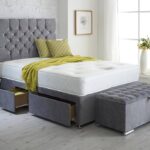A well-designed space must match fixtures with the architectural style of the building. Architectural styles reflect cultural trends, historical significance, and personal preferences. Learning more about the intricacies of these styles can help you make informed decisions when selecting fixtures for your home or office. Take a closer look at the functionality, aesthetics, and the materials used in both fixtures and architecture. Keep reading!
Types of Architectural Styles
Architecture has evolved through various movements. Gothic architecture features pointed arches, ribbed vaults, and intricate designs, demanding equally ornate fixtures to match its complexity. Mid-Century Modern is characterized by the use of natural materials. The fixtures should lean towards minimalism, perhaps utilizing wood or metal without excessive adornments.
Country or farmhouse styles celebrate rustic charm, showcasing wood and natural fabrics. Arts and Crafts architecture promotes handcrafted details and earthy tones, indicating a preference for artisanal fixtures that reflect this ethos. A thorough understanding of these architectural styles guides homeowners and designers in selecting fixtures that add to their space.
Accessibility and Functionality
Selecting the right fixtures means putting functionality first. Understand how different fixtures will be used in conjunction with the architectural style. Well-designed hardware should look great and serve practical purposes with precision. Look for simple door hardware that operates with ease and adds to that visual flow. Adjustable shower heads offer comfort in traditional bathrooms and maintain a classic feel.
Energy efficiency should be considered in lighting fixtures. Many modern designs incorporate LED technology and combine usefulness with long-term cost savings. Highlight accessibility and energy-efficient options to encourage sustainable practices and satisfaction post-installation.
Choosing the Right Materials
The materials used in fixtures should mirror the quality and aesthetic of the architectural style. Selecting high-quality materials increases longevity and boosts visual appeal. Wood, metal, glass, and ceramic can evoke vastly different emotions and may mesh better with specific styles. Wrought iron fixtures harmonize beautifully in a rustic or Mediterranean setting, whereas sleek aluminum complements contemporary designs.
Environmentally friendly materials are most appealing to eco-conscious homeowners. This trend can reflect your style; homeowners want to embrace natural materials, reclaimed woods, and sustainable options. A thoughtful choice of materials can impact both the aesthetic and environmental footprint of your fixtures.
Color Palette Considerations
The color palette of your fixtures should align with the scheme of the architecture. A well-defined color palette can create a visually striking interior. Warm tones in fixtures can bring comfort to a traditional space; cool colors promote serenity in modern designs.
Look into the existing materials, wall color, and furniture when choosing fixtures. Muted tones can blend into contemporary spaces, and vibrant colors might stand out as focal points in eclectic homes. Seasonal trends in color can provide some inspiration, as certain shades may resonate more during particular times of the year. Striking a perfect balance between existing colors and new additions will boost both harmony and excitement within the space.
Lighting Fixtures
Lighting emphasizes architectural features and sets the mood of a space. The type of lighting fixtures you select can either highlight or obscure the design intent of your architecture. Contemporary spaces might benefit from recessed lighting to create an unobtrusive aesthetic, whereas traditional homes may call for ornate chandeliers that draw attention to high ceilings.
Track lighting, pendant lights, and wall sconces offer higher flexibility. Consider scale and proportions so that fixtures do not overwhelm or undersell the room’s features. Bold fixtures can serve as works of art themselves and become conversation starters when chosen wisely. Good lighting should improve the architectural beauty and provide practical illumination.
Accessorizing Fixtures
Accessories like decorative handles, hinges, and lighting shades can reflect the intricate details or simplicity of the chosen style. These elements provide the finishing touch that may define the appearance. A period-style home could incorporate ceramic or glass light fixtures that echo the era’s aesthetics, adding depth without overshadowing the architecture. A contemporary space may feature streamlined pendant lights or sleek cabinet pulls that harmonize with the modern feel.
Avoid over-accessorizing to avoid cluttered designs. Instead, select a few key accessories that link back to the primary architectural theme and create a unified appearance. Thoughtful accessorizing can impact the ambiance, transform each space, and maintain its original character.
Considering the integration of fixtures with architectural style creates a cohesive and appealing space. Every facet, from functionality to material choices, achieves the desired outcome. Always prioritize a balanced approach that respects both the beauty of the architecture and the requirements of modern living. Take the time to evaluate your fixture selections so that they align with your home’s architectural style.


